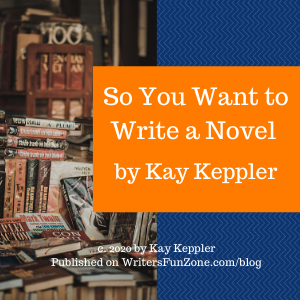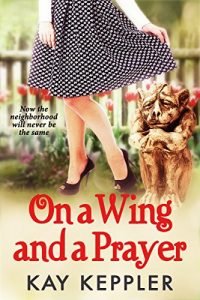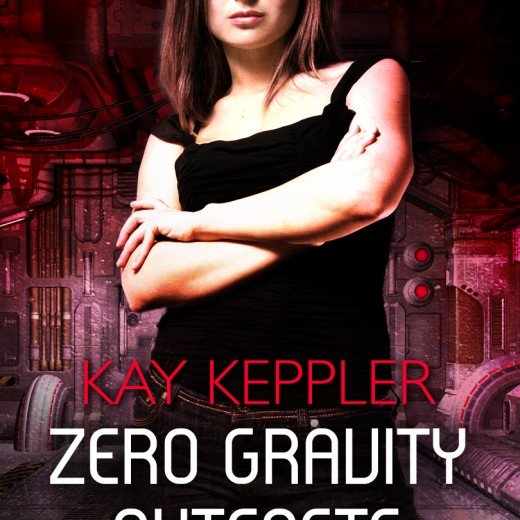So You Want to Write a Novel by Kay Keppler
 Let’s welcome back monthly columnist, editor, and novelist, Kay Keppler, as she shares with us “So You Want to Write a Novel.” Enjoy!
Let’s welcome back monthly columnist, editor, and novelist, Kay Keppler, as she shares with us “So You Want to Write a Novel.” Enjoy!
***
When faced with the idea of writing a 100,000-word novel, many new writers feel terror. Many experienced writers, too. That’s a lot of words. A lot of space to fill with story.
Write Manageable Sections
One way to keep the task manageable is to think of your book in terms of acts.
On the upside, an act is much shorter than 100,000 words; therefore, a more manageable chunk to write.
On the downside, there is no rule about acts. Three acts? Four? Five? Or more?
How many should you plan for, and long should they be? What should they accomplish?
The answers are whatever you decide.
Maybe One Draft to Begin
Jennifer Crusie starts with one large discovery draft, a messy splurge of words that she shapes into acts later, in revision, to incorporate pacing and escalation after the central themes have evolved and the characters have come to life.
She describes “story” as a stable situation that blows up into an unstable situation, and then gets worse, and then a lot worse, and then much worse than that, until you get to the do-or-die moment of the climax.
Her job is to escalate the narrative through turning points—big scenes that shift the story into new directions and raise the stakes for the characters. A chunk of story up through a turning point is an act.
Establish the “Point(s) of No Return”
One film critic describes the end of an act—a turning point—as “where a character(s) makes a choice and can no longer go back.”
A turning point doesn’t have to be a huge, cataclysmic, car-crashing scene, but it must result in the character acting in a way that changes the narrative.
Your turning points and the subsequent character actions propel the story, driving it toward the climax. The placement of the turning points as you progress to the end, is pacing. Basically, you want the turning points to get closer as you move toward the finish.
Or to Write A Novel, Plan Your Acts First
If writing one full, messy, incomplete draft seems too daunting—and you’re good with planning—you might prefer to plot your acts and turning points in advance, so you know where you’re headed.
Working in acts can reduce your 100,000-word behemoth into manageable sections.
Think of them as stories themselves—smaller stories within your overall novel.
If you plan for a three-act structure, then, roughly speaking, each act would have 33,000 words (although you’d want your first act to be longer and your third act to be shorter to improve the pacing.)
But if 33,000 words is still too big, divide those acts into scenes, and use each scene to develop character, setting, motivation, or whatever else you want, to build toward your act’s turning point.
But a three-act structure may not be the best format for your story.
How Many Acts?
What is the nature of your novel?
Many stories are better told with four or five acts, or even more.
It’s all a question of what story you want to tell how best to tell it.
What are the turning points, the major events? What big decisions did your character make?
The answer to those questions will guide how many acts you need.
What Shakespeare Did
Shakespeare, for example, typically worked in five acts.
The first act introduced the characters and a preexisting central main conflict.
The second act contained an event (a relationship development, fight, reveal, or surprise) that challenged or worsened that main conflict.
The third act contained a spurring incident or action (inversion of fortune, best intentions gone awry, deaths, loss, and/or chaos) that complicated the conflict and changed its direction.
The fourth act was full of dramatic, fast-paced (and often, poorly conceived) character decisions that exposed their flaws and strengths.
And then, in the typical Shakespearean fifth act, the audience gets the climax, resolutions, weddings, tragedy, and/or fallout. The fifth act wraps up the action and restates the theme, often encapsulating the story in so doing.
But as brilliant as Shakespeare was, the five-act structure is just another tool to help you structure your novel. It’s not a rule that you “must” follow.
Structure Should Fit Your Story
Planning out your story’s acts in advance—or revising them after your initial draft—can help you manage your ideas and material.
Go with the structure that best fits your novel, but remember to have an act structure both for the main plot and for each of your characters’ personality developments.
When you build these structures, each with their own beats, with each character making active decisions, your story moves forward—and carries your readers with it.
***
Editor’s note: If you’re interested in learning more about story structure to help you write a novel, then check out our home study class in our online school for fiction writers: “How to Choose Your Story’s Structure: Learn the ins and outs of five powerful storytelling structures.”
***
ABOUT THE AUTHOR
 Kay Keppler is an author Zero Gravity Outcasts, Betting on Hope, Gargoyle: Three Enchanting Romance Novellas, and editor of fiction and nonfiction –Angel’s Kiss and Outsource It!
Kay Keppler is an author Zero Gravity Outcasts, Betting on Hope, Gargoyle: Three Enchanting Romance Novellas, and editor of fiction and nonfiction –Angel’s Kiss and Outsource It!
She lives in northern California. Contact her here at Writer’s Fun Zone in the comments below, or at kaykeppler@yahoo.com to ask questions, suggest topics, or if you prefer, complain.
***
More popular articles by Kay Keppler on Writer’s Fun Zone:






